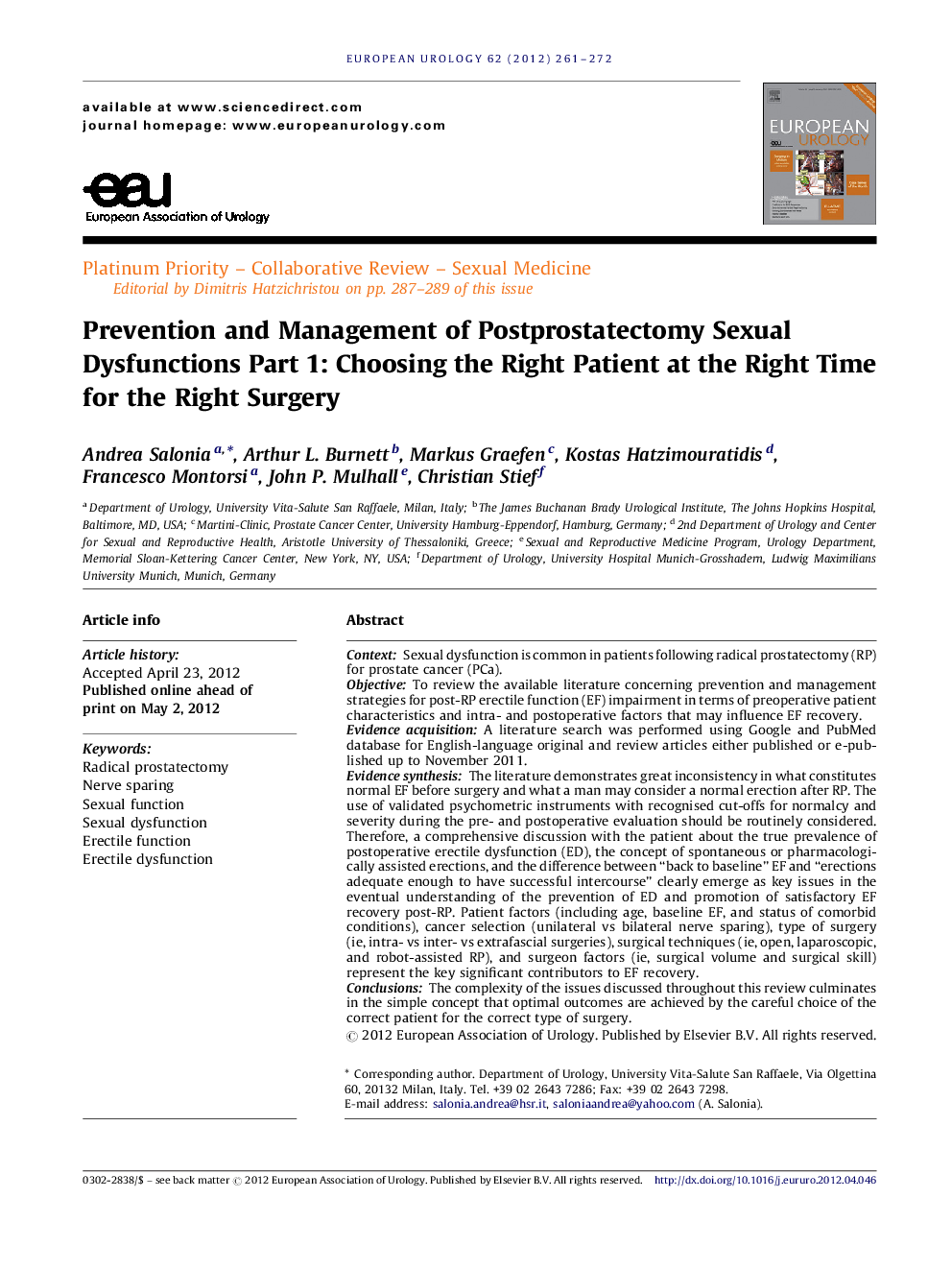| کد مقاله | کد نشریه | سال انتشار | مقاله انگلیسی | نسخه تمام متن |
|---|---|---|---|---|
| 3924053 | 1253088 | 2012 | 12 صفحه PDF | دانلود رایگان |

ContextSexual dysfunction is common in patients following radical prostatectomy (RP) for prostate cancer (PCa).ObjectiveTo review the available literature concerning prevention and management strategies for post-RP erectile function (EF) impairment in terms of preoperative patient characteristics and intra- and postoperative factors that may influence EF recovery.Evidence acquisitionA literature search was performed using Google and PubMed database for English-language original and review articles either published or e-published up to November 2011.Evidence synthesisThe literature demonstrates great inconsistency in what constitutes normal EF before surgery and what a man may consider a normal erection after RP. The use of validated psychometric instruments with recognised cut-offs for normalcy and severity during the pre- and postoperative evaluation should be routinely considered. Therefore, a comprehensive discussion with the patient about the true prevalence of postoperative erectile dysfunction (ED), the concept of spontaneous or pharmacologically assisted erections, and the difference between “back to baseline” EF and “erections adequate enough to have successful intercourse” clearly emerge as key issues in the eventual understanding of the prevention of ED and promotion of satisfactory EF recovery post-RP. Patient factors (including age, baseline EF, and status of comorbid conditions), cancer selection (unilateral vs bilateral nerve sparing), type of surgery (ie, intra- vs inter- vs extrafascial surgeries), surgical techniques (ie, open, laparoscopic, and robot-assisted RP), and surgeon factors (ie, surgical volume and surgical skill) represent the key significant contributors to EF recovery.ConclusionsThe complexity of the issues discussed throughout this review culminates in the simple concept that optimal outcomes are achieved by the careful choice of the correct patient for the correct type of surgery.
Journal: European Urology - Volume 62, Issue 2, August 2012, Pages 261–272